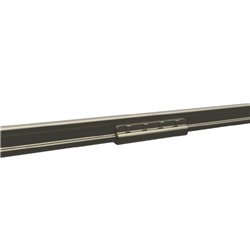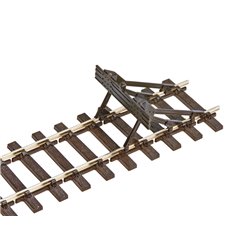A tunnel liner is a sheet of scale brickwork, often moulded for detail and constructed from plastic, used to...
No products
Product successfully added to your shopping cart
There are 0 items in your cart. There is 1 item in your cart.
Search Tips
What is the difference between bullhead and flat-bottom rail?
From a modeller's perspective, there is no practical difference between bullhead and flat-bottom rail. The existence of two variants merely facilitates modellers who wish to represent a particular era in railway history. But why did the real railway use the two types?
Very early bullhead rail had a symmetrical design and was known as double-headed rail, this was a design that could be rotated when worn to lengthen its lifespan. However, turning rails that are heavily-used also reverses stresses on the rail and can create fractures, meanwhile tracks not so heavily used over time suffer corrosion along their bottom edge making them equally unsuitable for flipping.
With the reusable element eliminated from the equation, bullhead rail's design gradually evolved to have a profile with a similar shape to its top and bottom but the upper part was larger, this design was successfully used until the mid 20th century.
Advances in rail design led to the introduction of a new flat-bottomed rail being introduced and by the 1950s flat-bottom rail was the track of choice. Bullhead rail was not to disappear overnight though, and the practice of hand-me-downs saw bullhead track being used on secondary routes and branch lines for many decades later and in sidings to this day!
Click here to receive the tips weekly in your mailbox. You can unsubscribe at any time.










